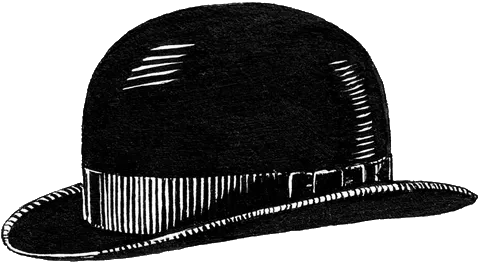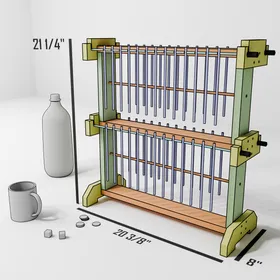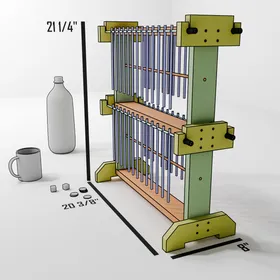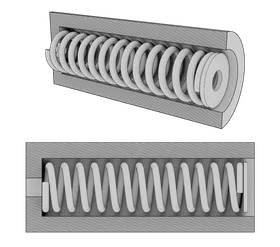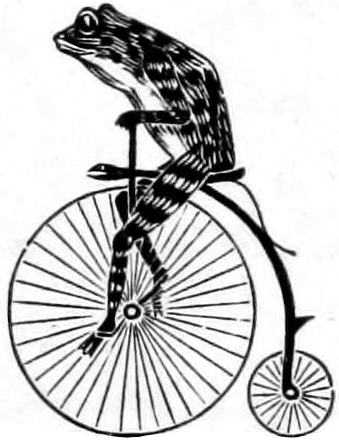
It's been awhile since I posted and I've picked up a new project in the meantime (of course). I've been interested in the I Ching (易经) for a few years now, and I decided to create a set of implements for use in the divination process. Currently I'm working on a set of stalks used to cast a Hexagram (卦, guà), which is the first step in divination. Specifically this post will cover my designs for a drying rack I'll be using to varnish the stalks, but first I'll give some background on the I Ching and the project so far.
§Background
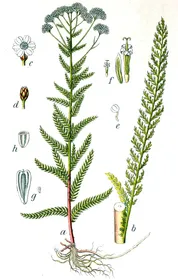
You might be wondering what the I Ching is, or how plant stalks are involved. Briefly, the I Ching is a divinatory text and one of the five Chinese classics. It's title is usually translated as Book of Changes, or Classic of Changes. The current form of its core text was finalized by the 9th century BC, during the early Zhou dynasty. The guà (trigrams and hexagrams), and various divination systems employing them, certainly predate this — oracle bones marked with numbers indicating guà have been found dating to the late Shang dynasty.1 The I Ching is effectively the culmination of older and poorly known divination traditions using guà. Regardless, the I Ching is truly ancient, dating to at least the late Bronze age, and representing a continuous ~3,000-year practice.
Casting a hexagram is the first step in the divination process, followed by interpretation thereof. This is done by a randomized process; it is a form of cleromancy, other examples of which include kau chim (求签), ifá, various forms of cartomancy, and Roman sortes. Generating randomness can be accomplished by a number of more-or-less traditional means. The most traditional method is by way of achillomancy2 — casting yarrow stalks — a form of rhabdomancy. Development of achillomancy helped to civilize divination; older traditions not only employed animal sacrifice, but human sacrifice as well.3 One can also use coins, or a computer, or any other means that is suitably random. Different methods may produce different distributions of results, however, directly affecting divination.
As to how randomness is generated using plant stalks, I use The Ancient Yarrow Stalk Method, although I've streamlined the process somewhat in practice. The process is too involved to reiterate here, so check the link for details, if you're interested.
§Material Selection
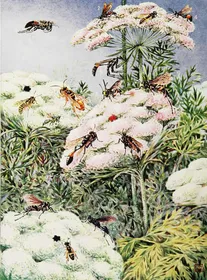
As I said in the beginning of this post, I've chosen to use stalks, although my first set uses Giant Goldenrod instead of Yarrow. Yarrow is the traditional material, but material selection should also consider the chi (气) of the material and its resonance with the chi of the diviner — so I chose something local to me instead. Originally that was going to be Queen Anne's Lace, but after processing I realized I didn't have enough material, and it was too late to collect more.
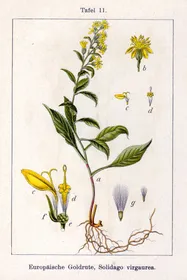
Fortunately there was still plenty of (Giant) Goldenrod standing and in good condition, so I changed gears. I haven't heard of Goldenrod being used for this purpose before, but it's worked out well. Goldenrod stalks are long and mostly straight making them suitable for this purpose. However, the stalk does taper along its length, and you may only get one or two sticks of a given diameter from one stalk. The Goldenrod material (I'm not sure if it counts as wood, but it's wood-like, at least) has a relatively coarse grain and tends to retain some rough spots even after sanding, but does have attractive patterns which are brought out nicely by oiling the material. In contrast the QAL samples I've experimented with have a much finer grain and develop a smooth, almost silky surface with sanding and oiling, but have no interesting pattern. Overall I think QAL is a better material, but Goldenrod is perfectly suitable.

I've also given some thought to the nativity of the materials I'm using and can't decide whether it would be better to use a native or introduced species. Initially I thought that the chi of a native species might be most in tune with my own and with this place. On the other hand, I myself am (I suppose) introduced, by the same process that introduced these plants, and in that sense their chi might resonate better with my own. For now I think I'll produce sets of stalks using both, and take this factor into consideration when divining with either. I also wonder if it wouldn't be better to attempt to align the chi of the stalks to the questioner and their question, rather than to the diviner (or perhaps with consideration to both), in which case it would be good to have multiple sets to choose from.
§Current Work
Currently the set has been sanded and treated with linseed oil (I chose linseed because I had some available; tung oil would have been nicer to work with). The next step is varnishing them with shellac, and to that end I'm designing and building a rack for the sticks to hang from while the shellac dries. That's where I'm at with things now, and I'll cover the design below.
§Drying Rack
This is the current stage of the project and the focus of this post. I had built an earlier rack for oiling the sticks — for convenience and because of the nature of the process, the sticks sit in that rack laid across two wires, with two points of contact. For this process I wanted them to hang freely without touching anything, to create a smooth surface, so I needed a new rack.
The first rack was thrown together without much thought and has some issues, so I planned this one more thoroughly. I built a model in Blender to help me think through the design. I learned some CAD last year, but I intend to make this by hand so I stuck to the 3D modeling I know best. Plus, I haven't used Blender in awhile and I had fun playing around with compositing and shading to create my renders.
I went through multiple versions before settling on the current design, so without further ado, here's my Varnishing Rack v5:
I produced some orthographic views as well:
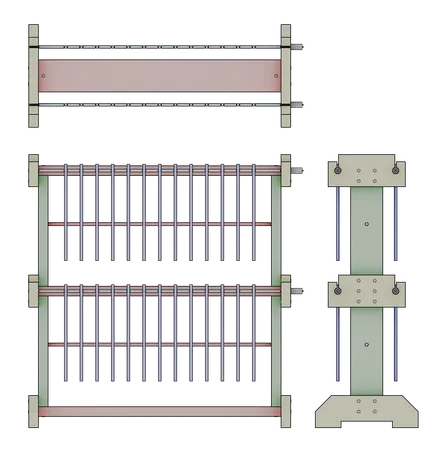
§Tensioners
The small cylinders on one end of the rack are tensioners to keep the wire taut, in theory. With the last rack I had trouble with the wires becoming loose over time — these are meant to solve that. I'm not sure how well these will actually work (they're not essential to the design), but the idea is simple: each one consists of a spring inside a cylindrical housing open on one end, with a washer at the end of the spring. The wire will be affixed to the washer and the spring will, hopefully, draw the wire taut.
I may have the outer cylinders 3D printed, or I may weld them together. I haven't decided yet. Either way, I produced a few renders of these as well:
§Future
After varnishing I'll cut half an inch off each stalk (where the hole is located for hanging them) and finish the ends. This will complete my first set of stalks, and my next goal will be building something to store them in. I'll also be producing a concise reference version of the I Ching, and I'll post any progress here. Thanks for reading!
§History
- 2025-06-09
- 🔨 WIP. The next edit will include additional images of the sticks that I'm working on. I wanted to get this published for now, though.
- 2025-06-09
- 🩹 Fixed typos, etc. and added more background on the I Ching. Fixed a broken link. Added citations.
- 2025-06-10
- 📖 Added more historical details and sources.
§Footnotes
-
Smith, Richard J. (2012) The I Ching: A Biography. Princeton, NJ: Princeton University Press. "We do not know for certain what the numerically generated trigrams and hexagrams in late Shang and early Zhou oracle bones and other sources might have signified ..." ↩
-
Minford, John. (2014) I Ching, The Essential Translation of the Ancient Chinese Oracle. Viking. "In the period that followed, the earlier shamanistic practices of Divination gradually lost ground to the more 'civilized' or 'secular' practice of achillomancy — Yarrow Divination — performed by casting the dried stalks of the yarrow, or milfoil, plant, Achillea millefolium." ↩
-
Minford, John. (2014) I Ching, The Essential Translation of the Ancient Chinese Oracle. Viking. "Shang Priest-Kings seem to have been hugely preoccupied with Warfare and Sacrifice, and in particular with large-scale Human Sacrifice. It was a gruesome business. As the contemporary archaeologist Robert Bagley has coolly observed, 'Beheading was the normal method of Sacrifice, but some victims were dismembered or cut in half and a few children seem to have been trussed up and buried alive.'" ↩
